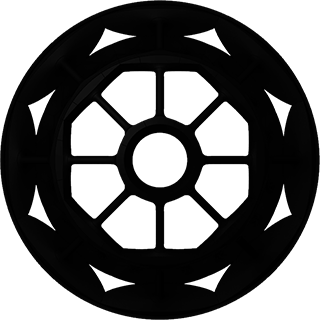Summary
At a height of 30 metres, the White Tower («Tor Alva») will be the tallest 3D-printed structure in the world. The White Tower is being built in close collaboration with the cultural foundation Nova Fundaziun Origen, the ETH Zurich and local, national and international partners. The White Tower will be constructed along the Julier route in the village of Mulegns, revitalising an entire region as a building for cultural performances.
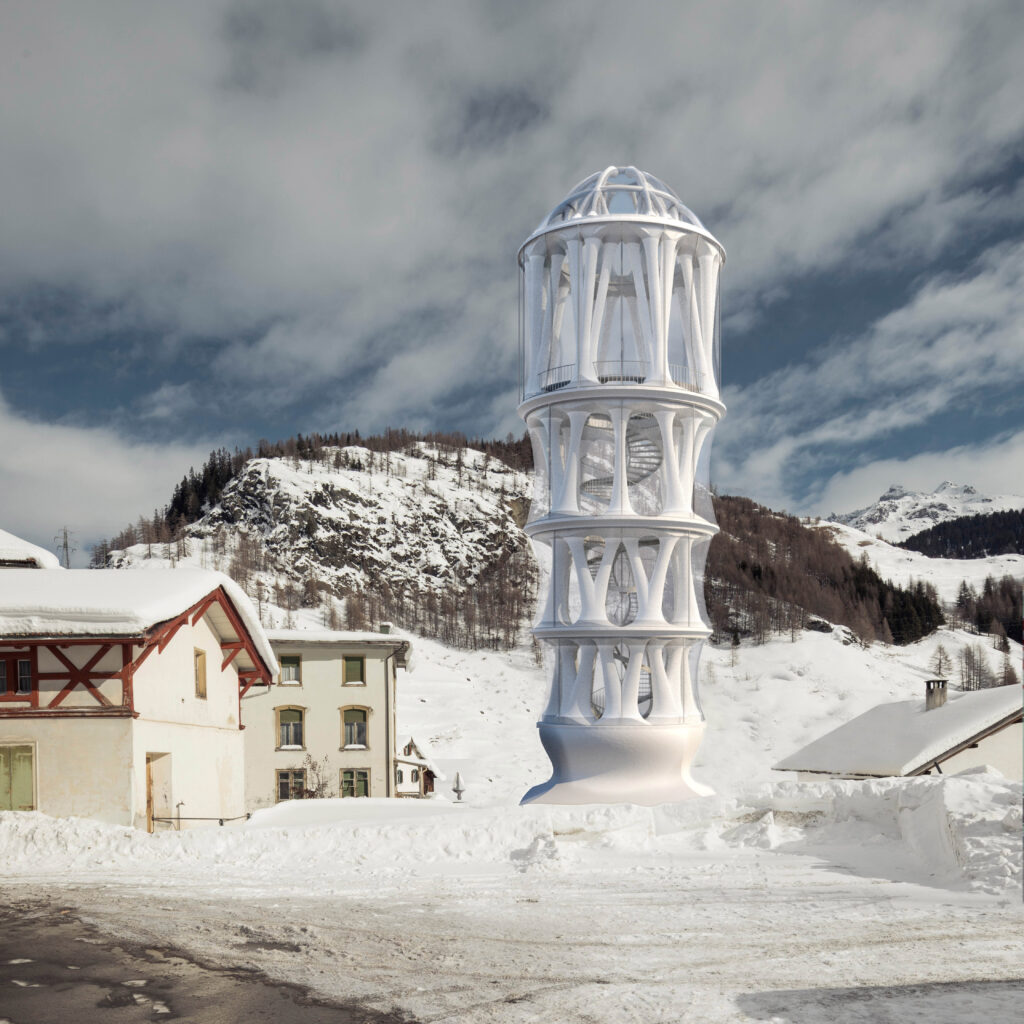
Impact
With its pioneering digital achievements, both in design and in fabrication, the White Tower demonstrates the possibilities that robotic construction holds for architecture and construction.
The White Tower realises the market-ready innovations of cutting-edge research in the world’s tallest digitally printed building. This pioneering achievement demonstrates the possibilities of 3D printing for construction, architecture and the environment: it shows how safer, more economical and more ecological construction is possible with reducing the material requirements and CO2 emissions, and how construction can become modular, circular and scalable.
The collaboration between the Nova Fundaziun Origen, the ETH Zurich and the industrial partners will have a broad economic, technological and architectural impact. As part of an overall concept, the White Tower contributes to the revitalisation of the mountain village of Mulegns, which is threatened by emigration. The tower promotes a gentle tourism in the region, raises the profile of the canton of Grisons and Switzerland architecturally as well as culturally, and it promotes regional and national knowledge transfer. The realisation of market-ready cutting-edge research makes a significant contribution to the global breakthrough of this innovative, digital and resource-saving construction method and architecture.
Visualisation: Hansmeyer/Dillenburger
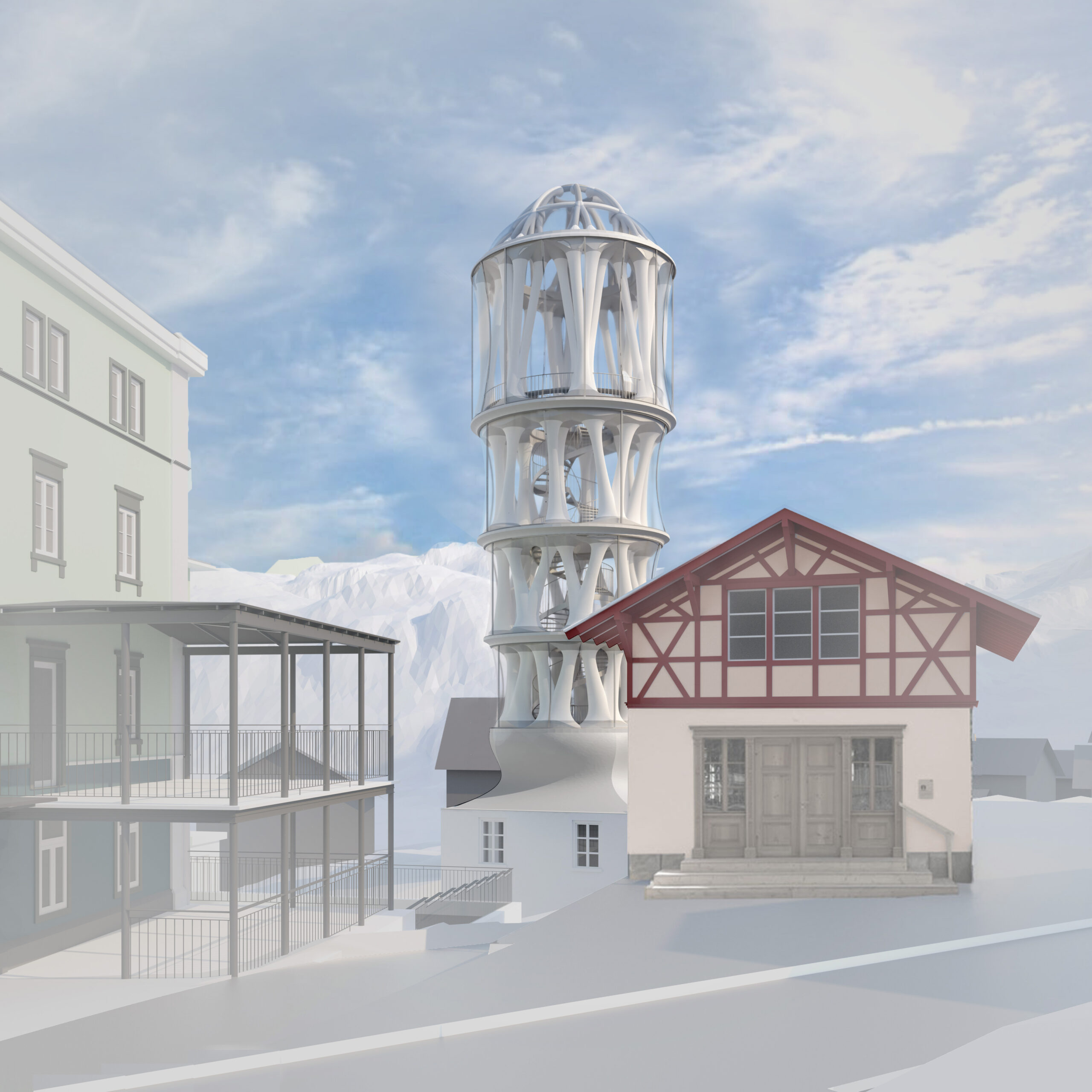
Architecture, art and culture
The White Tower of Mulegns is a tribute to the Grisons confectioners. It serves as a walk-in installation, an intimate concert space and a place of cultural mediation. The central design element of the tower consists of a series of 32 branched, 3D-printed columns. Visitors ascend a spiral staircase through a series of colonnades and reach the performance space on the top floor. This hall on the top floor of the White Tower has a stage with 45 seats and is designed for theatre and concerts.
The White Tower offers a sequence of abstract, atmospherically dense zones designed as a vertical enfilade. The tower’s striking variety of shapes is reminiscent of the craftsmanship of the master builders of the Baroque era in Grisons. With its spectacular architecture and innovative technology, the White Tower acts as an internationally recognised beacon.
Photo: A. Anton
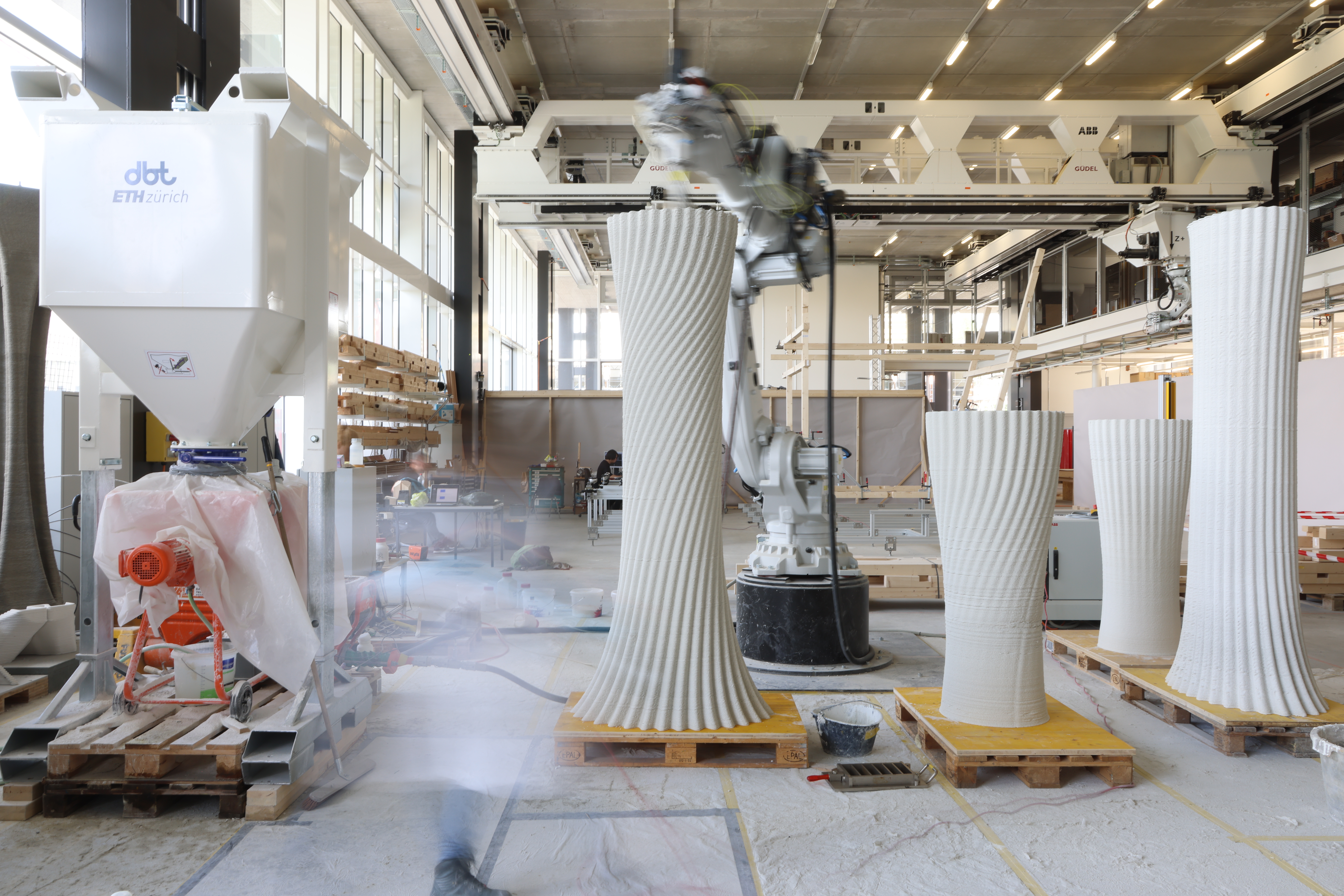
Technology, research and innovation
The White Tower demonstrates the groundbreaking possibilities of computational design and digital fabrication, which will fundamentally change conventional buildings in the years to come. Using robotic concrete extrusion processes, concrete can be applied specifically only where needed,thereby significantly reducing material consumption. The process no longer requires any formwork. This offers new degrees of design freedom regarding expressive shapes, surface detailing, and hollow features. It also allows for the production of one-of-a-kind architectural elements. Investigating concepts of circularity and reuse, the tower will be constructed with disassembly in mind so that it can be rebuilt at another location after its five-year service life in Mulegns.
Photo: B. Dillenburger
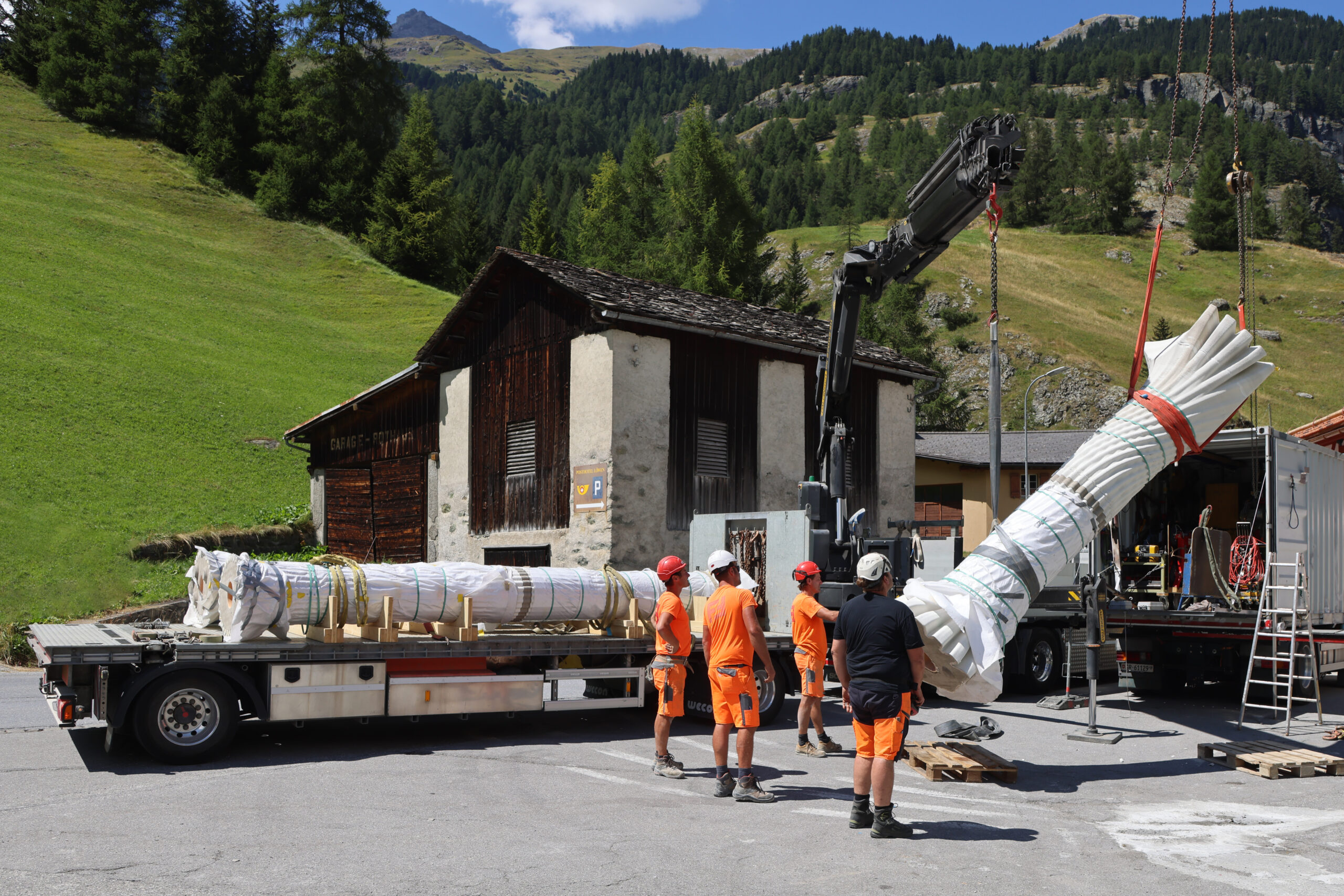
Team
The White Tower is being built in close collaboration with the cultural foundation Nova Fundaziun Origen, the ETH Zurich and local, national and international partners. Origen is the developer and will provide the cultural programme for the tower.
Facts & Figures Tor Alva
Structure
- Five levels consisting of 32 3D-printed columns
- Columns are reinforced and fully structural
- 124 3D-printed elements in total
Dimensions
- Height: 30.0m including an existing base
- Diameter: 7.0m to 9.0m
Veranstaltungsraum
- Capacity: 45 visitors
- Total height: 8.0m, covered by dome
3D Druck
- 2500 extruded concrete layers total
- 10 mm layer height, 15-20mm width
- Estimated print time: 900 hours
Fassade
- Removable lightweight membrane
Bau
- Opening Summer 2024
- Mulegns, Switzerland; on the Julier Pass
